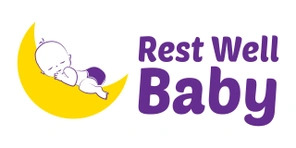Blog

Breastfeeding and Sleep Training
Breastfeeding and Sleep Training: What's True?
If you are a parent who breastfeeds, you’ve probably felt the tension: can you truly achieve solid, consistent sleep without giving up nursing? The internet is full of guilt-inducing rumors suggesting that you must wean before you can "sleep train" or that a breastfed baby is destined to wake every two hours until toddlerhood.
Let’s be clear: Breastfeeding and healthy sleep habits are not mutually exclusive. A breastfed baby can learn to sleep well. Sleep training is not about night weaning; it’s about giving your baby the skills to fall asleep and fall back asleep without a parent constantly initiating the process.
Myth vs. Reality: Debunking Common Fears
The biggest hurdle for breastfeeding parents is managing misinformation. Here are two myths we need to bust right now:
Myth: Breastfed babies naturally need to wake every two hours.
Reality: While newborns and very young infants have small stomachs and require frequent feeds, this need typically lessens significantly by the time they reach five to six months old. Once your baby is meeting growth milestones and your pediatrician (and IBCLC) approves, frequent waking is often due to habit, overtiredness or a missing sleep skill, not caloric need.
Myth: Sleep training means weaning, or forcing "cry it out."
Reality: Sleep training is simply the process of teaching your baby to transition from awake to asleep. There are effective, supportive methods that involve presence, touch, and verbal reassurance. Crucially, sleep training does not mean night weaning. You can absolutely maintain one or more feeds overnight while still teaching your child how to link their sleep cycles independently between those feeds.
Separating Comfort from Sleep
The biggest culprit in the perceived conflict is the feed-to-sleep association. Nursing is a powerful, comforting, and natural sleep trigger—but if it is the only way your baby knows how to fall asleep, they will likely rely on it every time they wake up (which is natural, as we all briefly wake between sleep cycles).
To navigate this without disrupting your preferred soothing method, focus on timing the final feed to create a clear separation between nourishment and the act of falling asleep:
Make Nursing the Starter, Not the Finisher: Shift the timing of the last feed of the day so it ends 20 to 30 minutes before the baby is placed in their crib. The goal is to "bookend" the final feed with other calming actions.
Create the "Buffer Zone": Immediately following the feed, incorporate a few short, predictable steps—like reading a book, singing a song, or putting on the sleep sack—before the final soothing steps that lead to sleep. This simple buffer ensures your baby is settling down not because of the feed, but after the feed, breaking the strong association.
Actionable Steps for Breastfeeding Families
Keep the Comfort, Change the Association: Continue to nurse for comfort and closeness, but aim to break the nursing-to-sleep habit for the final bedtime and nap transitions.
Maintain Night Feeds Strategically: If your baby is still young or needs a feed, maintain it! When you go in for the night feed, keep the lights low, interaction minimal, and return them to the crib after the feed, still slightly awake, if possible. You are feeding, not resettling for the night.
Prioritize Consistency: Toddlers and babies thrive on predictability. Your success hinges not on which method you choose, but on how consistently you apply it every single night.
You can nurture your child through breastfeeding and empower them with the lifelong skill of independent sleep. Be patient with yourself and your baby; this balance is entirely achievable.
Want to learn more? Book your 30-minute Sweet Dreams Starter Call today and discover how I can help your family enjoy the gift of sleep.
Yours in sleep,
Tracie / Rest Well Baby
www.restwellbaby.com
Tracie Kesatie is a Certified Gentle Sleep Coach dedicated to helping families with little ones 0-10 years of age achieve a restful night's sleep.
Disclaimer: This article provides general information and is not intended as medical advice. Always consult with your pediatrician for any concerns about your child's health.
Blog





